Unlock the Magic in Your Story Now
Get the Free 20 questions to Ask Before Launching Your Idea workbook when you sign up for occasional updates.
Get the Free 20 questions to Ask Before Launching Your Idea workbook when you sign up for occasional updates.
The Stages Of Change
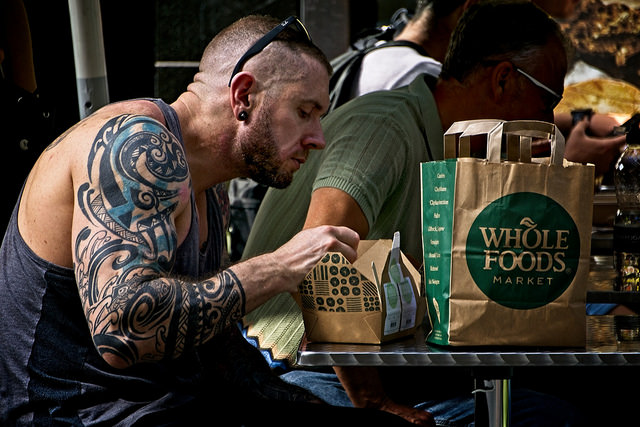
If you’ve ever tried to quit a bad habit or establish a new one, you know that change takes time. When it comes to creating change in our own lives, we cut ourselves some slack because we know that change is a process. And yet when it comes to our customers, we impatiently hurry them through the process. We try to persuade people to act before they’re ready.
The result is a failed marketing strategy.
The alternative is to understand where your audience or prospective customer is in their change process and to meet them where they are. Here are seven stages people can progress through as they alter their opinion or behaviour.
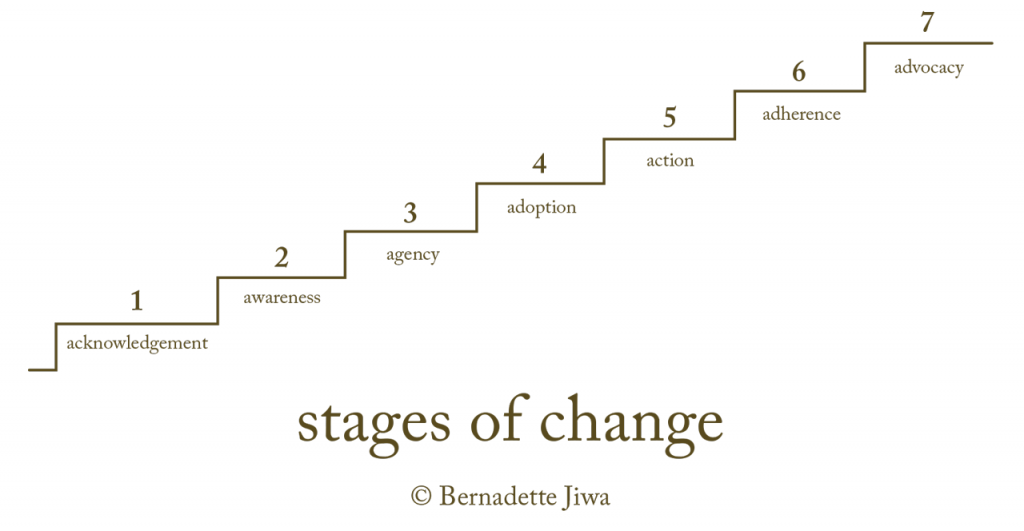
THE STAGES OF CHANGE
1. Acknowledgement
Recognition of the problem or unmet need.
2. Awareness
Acceptance that change is desirable and possible results in the investigation of potential solutions.
3. Agency
Motivation to change or decide intensifies.
4. Adoption
Decision to commit to a particular solution is made.
5. Action
Action taken results in behaviour or perception change.
6. Adherence
Sustained behaviour change results in habit creation, compliance or loyalty.
7. Advocacy
Success results in the development of brand affinity and product evangelism.
We can’t begin to influence people unless we’re prepared to meet them where they are on their journey.
Image by Garry Knight
Share this article
Leaving A Trail
filed in Strategy

The contractors who mow the lawn in the public spaces where my parents live whizz around on ride on lawnmowers. They don’t get off to move obstacles, trim edges or collect the grass. The job is done in no time. But for the next few days, cut grass blows around the suburb and is trailed into residents’ homes. The whole area looks a mess.
No matter what we do, we each have the opportunity to leave a trail. Whether we bake bread or write code, replace hips or mow lawns. We don’t do our best work by simply getting the job done. We do our best work when we can look back and say—this place, these people or that situation, is better for our being here.
Who, what or where is better for your being here?
Image by Garry Knight
Share this article
The Big Bang Is Overrated

When we imagine our ideal product launch we picture attention, applause and armies of customers beating a path to our door. Successful companies hardly ever launch with a big bang. Most hits begin with the slow and steady iteration of a product or service that’s improved by getting it in front of, and in the hands of customers and users.
We make things better by having the patience to tinker at the edges.
Image by Garry Knight
Share this article
What Outcome Are You Designing For?
filed in Strategy

If we want to eat healthy food we know we need to get into the habit of buying more vegetables. We also know resisting the temptation to put the sugary snacks we love into the shopping cart is how to avoid eating them. Once the fudge is in the kitchen cupboard, it’s too late. We will eat it. How we configure our environments, both physical and digital, impacts our results.
We get the outcome we design for. Every decision we make has a direct effect on not only the habits we establish, but on the kind of communities, companies and cultures we build. We also get who we design for. The products we sell, the signals we send and the stories we tell are clues to our right customers.
We shape our results by being intentional and working backwards from our desired outcomes.
How are you designing for the outcome you want?
Image by Garry Knight
Share this article
Good Feedback
filed in Strategy

The south Dublin café owner is proud of the business he’s growing, and rightly so. In just twelve months he’s built a thriving small business that’s become a meeting place for locals. The kind of place people recommend to their friends. A café people want to return to and talk about.
If you spend any time there, you’ll notice that he asks every customer for feedback.
‘What did you think of the coffee? How was the breakfast? Did you enjoy that?’
He gets the same response every time. Everything is always ‘brilliant’ or ‘lovely’ according to the customers at this cafe. It seems that there’s no room for improvement. Of course, that can’t possibly be true. There are many tiny tweaks the owner could make to improve the customer experience.
Why we ask for feedback changes how we ask for it.
And how we ask for feedback changes the feedback we get.
Many people, even paying customers, are too polite or too busy to criticise and give generous feedback. It’s not in our nature to want to look someone in the eye and tell them they got it wrong, especially when we sense they are doing their best to get it right. Not all good feedback is good feedback. We improve by seeking out generous bad feedback. We do that by being honest about why we want feedback in the first place. And then by asking the right questions, of the right people, at the right time. Questions that sometimes get responses we don’t want to hear.
Image by Garry Knight
Share this article
Hearts Before Minds
 People are creatures of habit. You only have to look at the rituals in your day-to-day to see how patterns permeate life. Think about the things you do on rinse and repeat. The brands you always buy. The supermarket aisles you choose to walk down. The ones you avoid.
People are creatures of habit. You only have to look at the rituals in your day-to-day to see how patterns permeate life. Think about the things you do on rinse and repeat. The brands you always buy. The supermarket aisles you choose to walk down. The ones you avoid.
We have come to believe the success of our companies or causes is dependent on marketing that convinces people to change their story. The chances of changing someone’s mind is more unlikely than we realise. What we must do instead of trying to alter a prospective customer’s version of the truth, is build on the story they already tell themselves about who they are and what they believe.
Change is hardly ever the result of people making u-turns en masse. Change happens when one person at a time takes a small step towards an alternative.
Image by Garry Knight
Share this article
What Are You Promising?
filed in Marketing, Storytelling, Strategy
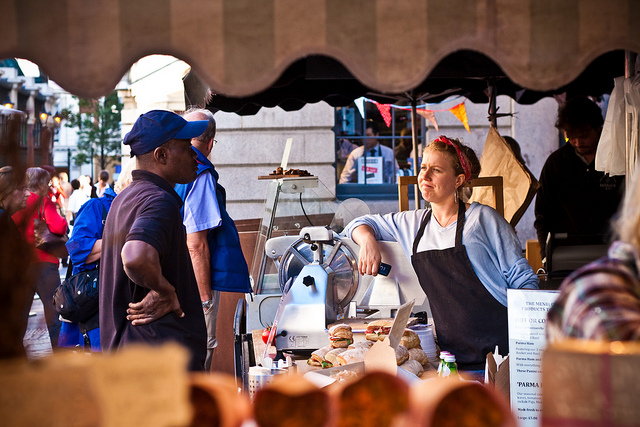 Products and services are promises. A promise from the brand to the customer. The word of the maker given to the user. A commitment from the seller to the buyer. Sellers promise that things are fresh and safe, worthy and working—that they will meet spec and sometimes even delight.
Products and services are promises. A promise from the brand to the customer. The word of the maker given to the user. A commitment from the seller to the buyer. Sellers promise that things are fresh and safe, worthy and working—that they will meet spec and sometimes even delight.
Whenever we make or sell something, we’re making a promise, and the customer is paying for a change that happens as a result of that promise.
Successful businesses are built by being clear about and aligning brand promises and customer expectations. What are you promising and what change is your customer expecting?
Image by Garry Knight
Share this article
The Imperfect Plan
filed in Strategy
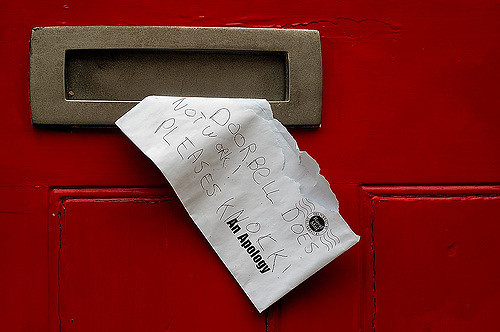 In our imaginations, we plan for perfect. Perfect products bought and loved by perfect customers—who only show up on our best days. The days when we are perfect.
In our imaginations, we plan for perfect. Perfect products bought and loved by perfect customers—who only show up on our best days. The days when we are perfect.
Of course, the reality can’t always live up to the imagination. So we need to have a plan for when we’re far from perfect. The companies that stand out are the ones that delight customers even in those moments when they disappoint. They spend more time working out how they’re going to apologise, than how they’re going to take a bow.
Image by Andrew Stawarz
Share this article
What Could You Leave Unsaid?
filed in Marketing, Storytelling, Strategy
 When I was in high school, the geography syllabus required us to study South America for a whole year. One of our teachers who had a special interest in South America decided to make it her business to teach us everything she knew about the continent. Everything. No stone was left unturned, no river basin unexplored, no coastal plain unexamined. Two things were achieved by the end of the year. We could rattle off the capital cities and the length of the rivers, but we had lost all interest in knowing anything more about South America.
When I was in high school, the geography syllabus required us to study South America for a whole year. One of our teachers who had a special interest in South America decided to make it her business to teach us everything she knew about the continent. Everything. No stone was left unturned, no river basin unexplored, no coastal plain unexamined. Two things were achieved by the end of the year. We could rattle off the capital cities and the length of the rivers, but we had lost all interest in knowing anything more about South America.
The best teachers didn’t try to teach us all of the facts. They piqued our curiosity enough to make us interested in discovering more for ourselves.
And so it goes for our marketing messages. Our job isn’t to tell customers everything all at once. It’s to make them curious to learn more. The best marketers, like the best teachers, know how much information is enough and what to leave unsaid.
Image by Bill Dickinson
Share this article
A Matter Of Marketing
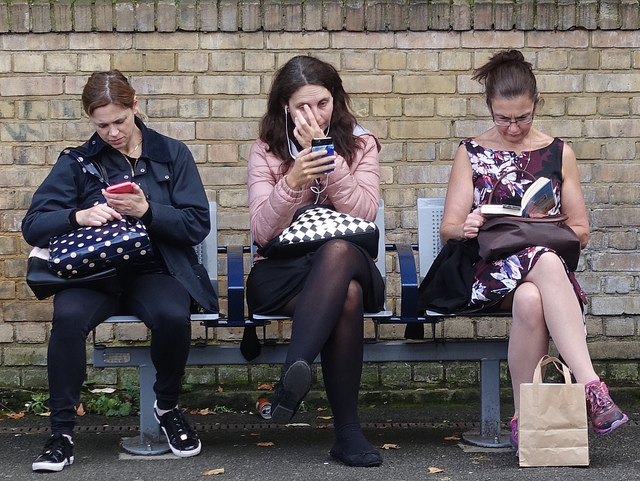 We live in an age when it’s easier than ever to get your message in front of people. Many businesses have a strategy for getting their message seen and heard—far fewer have a plan for being believed and understood.
We live in an age when it’s easier than ever to get your message in front of people. Many businesses have a strategy for getting their message seen and heard—far fewer have a plan for being believed and understood.
It’s one thing to get in front of people, and another for them to choose to keep you there.
It’s the market that dictates what matters, not the marketing.
Image by Gerry Popplestone